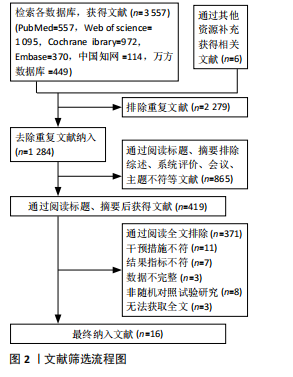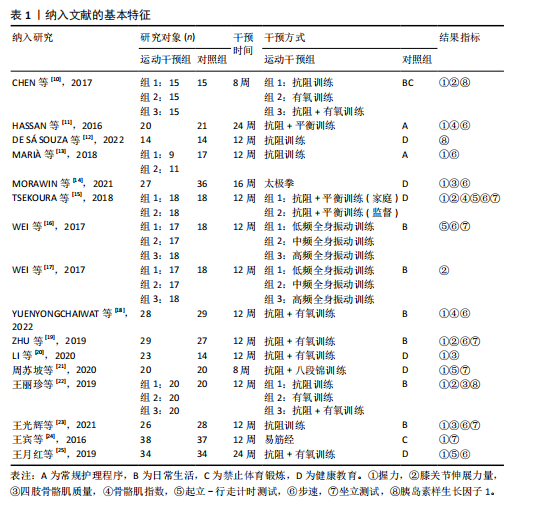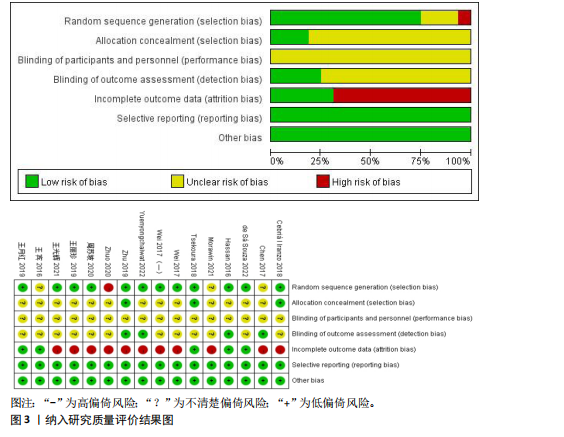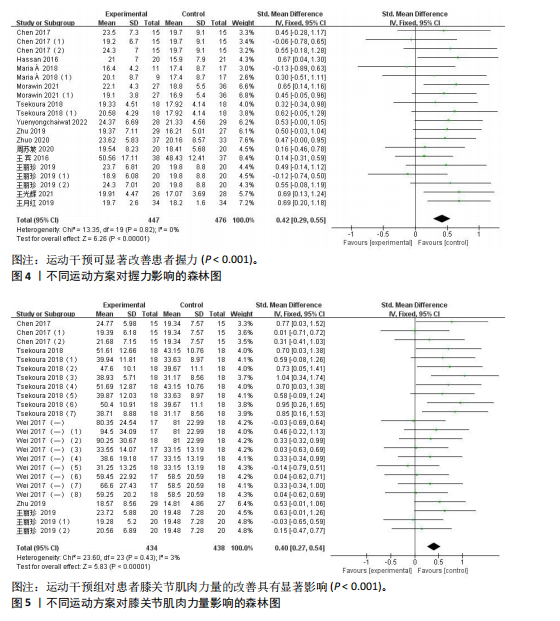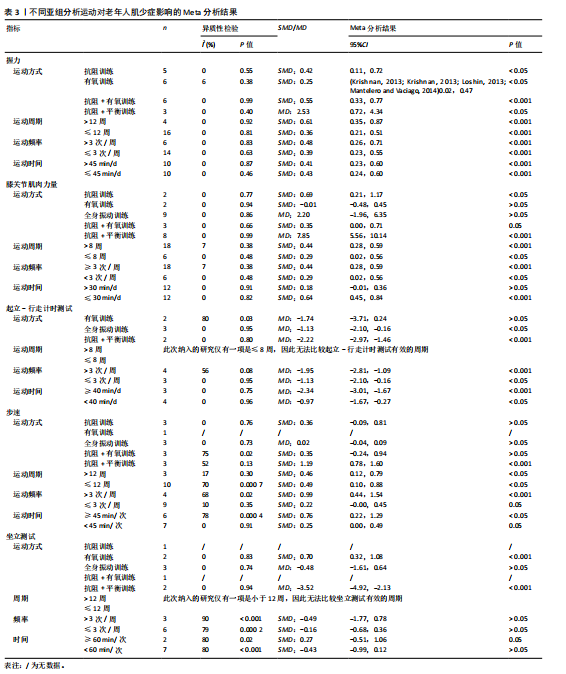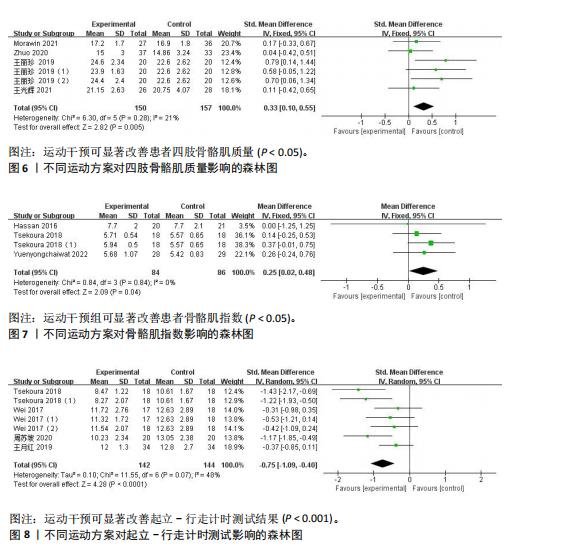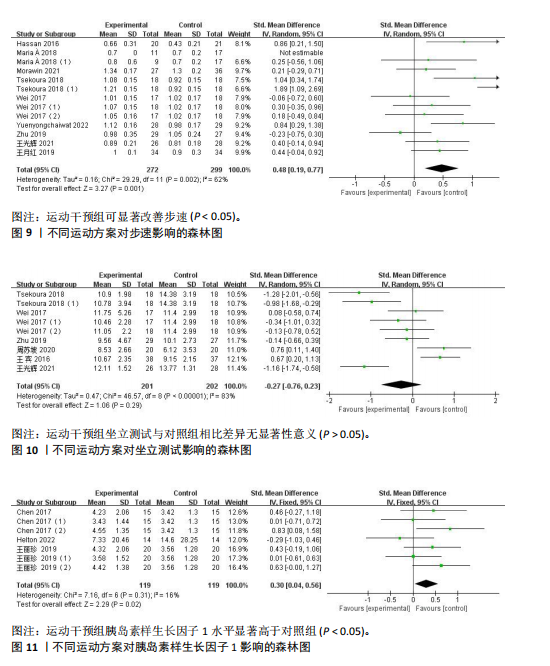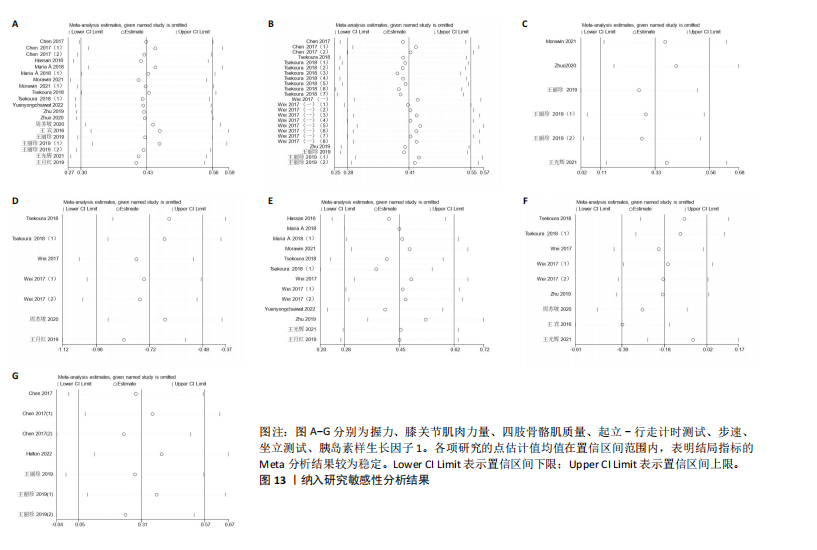[1] CHEN LK, WOO J, ASSANTACHAI P, et al. Asian Working Group for Sarcopenia: 2019 Consensus Update on Sarcopenia Diagnosis and Treatment. J Am Med Dir Assoc. 2020; 21(3):300-307.e2.
[2] ZANKER J, SIM M, ANDERSON K, et al. Consensus guidelines for sarcopenia prevention, diagnosis and management in Australia and New Zealand. J Cachexia Sarcopenia Muscle. 2023;14(1):142-156.
[3] 黄宏兴,史晓林,李盛华,等.肌少-骨质疏松症专家共识[J].中国骨质疏松杂志,2022,28(11):1561-1570.
[4] NIELSON CM, SRIKANTH P, ORWOLL ES. Obesity and fracture in men and women: an epidemiologic perspective. J Bone Miner Res. 2012;27(1):1-10.
[5] ORMSBEE MJ, PRADO CM, ILICH JZ, et al. Osteosarcopenic obesity: the role of bone, muscle, and fat on health. J Cachexia Sarcopenia Muscle. 2014;5(3):183-192.
[6] KARAKOUSIS ND, BILIOU S, PYRGIOTI EE, et al. Frailty, sarcopenia and diabetic kidney disease: where do we stand? Int Urol Nephrol. 2023;55(5):1173-1181.
[7] MONTERO-FERNÁNDEZ N, SERRA-REXACH JA. Role of exercise on sarcopenia in the elderly. Eur J Phys Rehabil Med. 2013;49(1):131-143.
[8] HUANG CY, MAYER PK, WU MY, et al. The effect of Tai Chi in elderly individuals with sarcopenia and frailty: A systematic review and meta-analysis of randomized controlled trials. Ageing Res Rev. 2022;82:101747.
[9] GREEN S, HIGGINS J. Cochrane handbook for systematic reviews of interventions, version 5.1.0. the cochrane collabo ration. The Cochrane Collaboration. 2011.
[10] CHEN HT, CHUNG YC, CHEN YJ, et al. Effects of Different Types of Exercise on Body Composition, Muscle Strength, and IGF-1 in the Elderly with Sarcopenic Obesity. J Am Geriatr Soc. 2017;65(4):827-832.
[11] HASSAN BH, HEWITT J, KEOGH JW, et al. Impact of resistance training on sarcopenia in nursing care facilities: A pilot study. Geriatr Nurs. 2016;37(2):116-121.
[12] DE SÁ SOUZA H, DE MELO CM, PIOVEZAN RD, et al. Resistance Training Improves Sleep and Anti-Inflammatory Parameters in Sarcopenic Older Adults: A Randomized Controlled Trial. Int J Environ Res Public Health. 2022;19(23):16322.
[13] CEBRIÀ IIM, BALASCH-BERNAT M, TORTOSA-CHULIÁ M, et al. Effects of Resistance Training of Peripheral Muscles Versus Respiratory Muscles in Older Adults With Sarcopenia Who are Institutionalized: A Randomized Controlled Trial. J Aging Phys Act. 2018;26(4):637-646.
[14] MORAWIN B, TYLUTKA A, CHMIELOWIEC J, et al. Circulating Mediators of Apoptosis and Inflammation in Aging; Physical Exercise Intervention. Int J Environ Res Public Health. 2021;18(6):3165.
[15] TSEKOURA M, BILLIS E, TSEPIS E, et al. The Effects of Group and Home-Based Exercise Programs in Elderly with Sarcopenia: A Randomized Controlled Trial. J Clin Med. 2018;7(12):480.
[16] WEI N, PANG MY, NG SS, et al. Optimal frequency/time combination of whole body vibration training for developing physical performance of people with sarcopenia: a randomized controlled trial. Clin Rehabil. 2017;31(10):1313-1321.
[17] WEI N, PANG MY, NG SS, et al. Optimal frequency/time combination of whole-body vibration training for improving muscle size and strength of people with age-related muscle loss (sarcopenia): A randomized controlled trial. Geriatr Gerontol Int. 2017; 17(10):1412-1420.
[18] YUENYONGCHAIWAT K, AKEKAWATCHAI C. Beneficial effects of walking-based home program for improving cardio-respiratory performance and physical activity in sarcopenic older people: a randomized controlled trial. Eur J Phys Rehabil Med. 2022;58(6):838-844.
[19] ZHU L Y, CHAN R, KWOK T, et al. Effects of exercise and nutrition supplementation in community-dwelling older Chinese people with sarcopenia: a randomized controlled trial. Age Ageing. 2019;48(2):220-228.
[20] LI Z, CUI M, YU K, et al. Effects of nutrition supplementation and physical exercise on muscle mass, muscle strength and fat mass among sarcopenic elderly: a randomized controlled trial. Appl Physiol Nutr Metab. 2021;46(5):494-500.
[21] 周苏坡,邹颖,孙小斐,等.八段锦预防老年肌少症人群跌倒的研究[J].体育科技,2020,41(6):27-28+30.
[22] 王丽珍,郭颖彬,骆俊宏.居家运动训练对老年肥胖型肌少症的效果[J].中国康复理论与实践,2019,25(1):90-96.
[23] 王光辉,蔡文玮,沈晓君,等.弹力带抗阻运动训练12周对社区老年肌少症患者肌力的影响[J].中国临床保健杂志, 2021,24(6):800-804.
[24] 王宾,马士荣,胡莺.健身气功易筋经锻炼对骨骼肌减少症患者康复效果的影响[J].中国老年学杂志,2016,36(4):898-899.
[25] 王月红,蔺建宇,孙超,等.有氧运动计划记录单在老年肌少症应用的效果评价[J].中国病案,2019,20(12):110-112.
[26] MUÑOZ-REDONDO E, MORGADO-PÉREZ A, PÉREZ-SÁEZ MJ, et al. New perspectives on frailty in light of the Global Leadership Initiative on Malnutrition, the Global Leadership Initiative on Sarcopenia, and the WHO’s concept of intrinsic capacity: A narrative review. Maturitas. 2023;177: 107799.
[27] SHEN Y, SHI Q, NONG K, et al. Exercise for sarcopenia in older people: A systematic review and network meta-analysis. J Cachexia Sarcopenia Muscle. 2023;14(3): 1199-1211.
[28] VALDÉS-BADILLA P, GUZMÁN-MUÑOZ E, HERNANDEZ-MARTINEZ J, et al. Effectiveness of elastic band training and group-based dance on physical-functional performance in older women with sarcopenia: a pilot study. BMC Public Health. 2023;23(1):2113.
[29] 温鹏天,张瑞丽,胡文清,等.不同运动干预方式对老年人肌少症改善效果的Meta分析[J].中国康复理论与实践,2021, 27(11):1291-1298.
[30] KENNIS E, VERSCHUEREN SM, BOGAERTS A, et al. Long-term impact of strength training on muscle strength characteristics in older adults. Arch Phys Med Rehabil. 2013;94(11): 2054-2060.
[31] MARZUCA-NASSR GN, ALEGRíA-MOLINA A, SANMARTíN-CALíSTO Y, et al. Muscle Mass and Strength Gains Following Resistance Exercise Training in Older Adults 65-75 Years and Older Adults Above 85 Years. Int J Sport Nutr Exerc Metab. 2024;34(1):11-19.
[32] MCLEOD JC, CURRIER BS, LOWISZ CV, et al. The influence of resistance exercise training prescription variables on skeletal muscle mass, strength, and physical function in healthy adults: An umbrella review. J Sport Health Sci. 2024;13(1):47-60.
[33] HOU L, LEI Y, LI X, et al. Effect of Protein Supplementation Combined with Resistance Training on Muscle Mass, Strength and Function in the Elderly: A Systematic Review and Meta-Analysis. J Nutr Health Aging. 2019;23(5):451-458.
[34] NEGM AM, LEE J, HAMIDIAN R, et al. Management of Sarcopenia: A Network Meta-Analysis of Randomized Controlled Trials. J Am Med Dir Assoc. 2022;23(5): 707-714.
[35] DENISON HJ, COOPER C, SAYER AA, et al. Prevention and optimal management of sarcopenia: a review of combined exercise and nutrition interventions to improve muscle outcomes in older people. Clin Int Aging. 2015;10:859-869.
[36] BEAUDART C, DAWSON A, SHAW SC, et al. Nutrition and physical activity in the prevention and treatment of sarcopenia: systematic review. Osteoporos Int. 2017; 28(6):1817-1833.
[37] ESCRICHE-ESCUDER A, FUENTES-ABOLAFIO IJ, ROLDÁN-JIMÉNEZ C, et al. Effects of exercise on muscle mass, strength, and physical performance in older adults with sarcopenia: A systematic review and meta-analysis according to the EWGSOP criteria. Exp Gerontol. 2021;151:111420.
[38] CRUZ-JENTOFT AJ, BAHAT G, BAUER J, et al. Sarcopenia: revised European consensus on definition and diagnosis. Age Ageing. 2019; 48(1):16-31.
[39] RUNGE M, REHFELD G, RESNICEK E. Balance training and exercise in geriatric patients. Musculoskelet Neuronal Interact. 2000; 1(1):61-65.
[40] CHEN N, HE X, FENG Y, et al. Effects of resistance training in healthy older people with sarcopenia: a systematic review and meta-analysis of randomized controlled trials. Eur Rev Aging Phys Act. 2021;18(1): 23.
[41] FILIPOVIĆ TN, LAZOVIĆ MP, BACKOVIĆ AN, et al. A 12-week exercise program improves functional status in postmenopausal osteoporotic women: randomized controlled study. Eur J Phys Rehabil Med. 2021;57(1):120-130.
[42] ASCENZI F, BARBERI L, DOBROWOLNY G, et al. Effects of IGF-1 isoforms on muscle growth and sarcopenia. Aging Cell. 2019;18(3):e12954.
[43] EKLUND E, HELLBERG A, BERGLUND B, et al. IGF-I and IGFBP-1 in Relation to Body Composition and Physical Performance in Female Olympic Athletes. Front Endocrinol. 2021;12:708421. |
